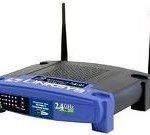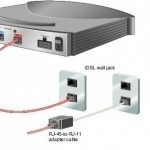RSVP (Resource Reservation Protocol) is a protocol used in VoIP to manage QoS (Quality of Service). RSVP works by requesting that required bandwidth and latency be “reserved” for the VoIP telephone call by every network device between the two endpoints. RSVP is defined in RFC 2205: Resource ReSerVation Protocol (RSVP). RSVP is a unicast and multicast signaling protocol, designed to install and maintain reservation state information at each router along the path of a stream of data. The RSVP protocol is used by a host to request specific qualities of Read More
NAT (Network Address Translation)
NAT (Network Address Translation) is a technique for preserving scarce Internet IP addresses. Why NAT? The current Internet uses IP addresses in the form xxx.xxx.xxx.xxx. A sample IP address might be 202.187.4.212. Because of the way these IP addresses are allocated, there started to be a shortage of available IP addresses. The current IP (Internet Protocol) revision in use on the Internet is IPv4. IPv6 is largely a response to this potential IP address shortage. Unfortunately, IPv6 is going to take decades to implement. A much quicker fix was needed, Read More
How to Secure a Linksys Wireless Router

A Linksys wireless router is a device that converts digital information into wireless radio waves and vice versa. Linksys wireless routers, like other wireless routers, are used for wireless computer networking. They use an antenna and an Ethernet or coaxial cable connection to allow computers to connect to a wireless network that is within range. A Linksys wireless router typically establishes a wireless network in a home or office building, but any nearby computer can communicate with the router if a password or other form of encryption is not protecting Read More
Bluetooth
Bluetooth is a specification for short distance wireless communication between two devices. Bluetooth Specifications Fixed/Mobile Mobile Circuit/Packet Both Max Bandwidth 1Mb Range 10 meters Frequency 2.40GHz-2.483.5Ghz (U.S. and Europe) or 2.472Ghz-2.497Ghz (Japan) Host Network None Definer Bluetooth SIG Bluetooth technology is named after Harald Bluetooth, a Danish king who managed to consolidate Denmark and a part of Norway in the 1900s. The choice for the name of this technology is a manifestation of how influential and central the companies from this region are to the telecommunications industry. Bluetooth is a Read More
IDSL (ISDN over DSL)

In the modern world of information and computer science, there are many different ways of accessing the Internet and landline telephone service. The most common form of doing so is through a DSL, or Digital Subscriber Line. DSL allows users to physically connect to a vast network of electrical signals that carry information. DSL is used for telephone services and accessing the Internet, though other means of accessing the Internet are also available. This article will define the main types of DSL and will focus specifically on the applications, advantages, Read More
How to Connect a Wireless Router
Wireless routers are network devices that combine the functionalities of a router and a wireless access point. Wireless routers can be connected to broadband modems to provide wireless access to the Internet to two or more computers or laptops within a home environment. They enable greater mobility for laptops and other portable computers. They can also operate in a wired LAN (Local Area Network) or wireless LAN network. Some wireless routers have built in modems as well. Wireless routers are secure as they act as a hardware firewall. They provide Read More
Cat 5
Cat 5, short for Category 5, is the current accepted industry standard for network and telephone wiring. Cat 5 is an unshielded twisted pair type cable exclusively designed for high signal integrity. The cable consists of four pairs of 24-guage twisted copper pairs terminating in an RJ-45 jack. If a wire is certified as Category 5 and not just twisted pair wire, then it will have "Cat 5" printed on the shielding. The actual Cat 5 standard describes specific electrical properties of the wire, but Cat 5 is most widely Read More
ATM (Asynchronous Transfer Mode)
ATM (Asynchronous Transfer Mode) is a technological system developed for both local and wide area networks (LAN and WAN), and designed to handle data as well as video and voice traffic in real time, all at the same time. The system architecture makes use of switches that set up logical circuits at both ends of the data stream, which ensures unprecedented quality of service (QoS). Unlike conventional telephone switches that sets up dedicated end-to-end circuits, unused bandwidth in Asynchronous Transfer Mode (ATM) can be used for other purposes if needed. Read More
Peer Guardian
Peer Guardian is perhaps the most popular IP blocking software tool on the web. The Peer2Peer sharing community primarily uses Peer Guardian to block the RIAA, MPAA, and other organizations from tracking a sharer’s IP address and online activity. In addition to blocking IP addresses, Peer Guardian also blocks adware, spyware, and government and educational IPs. Peer Guardian is an open source that Phoenix Labs originally developed. The latest version is Peer Guardian 3. However, since Peer Guardian 3 is only supported on MS Windows Vista, Peer Guardian 2 continues Read More
WPA (Wi-Fi Protected Access)
WPA (Wi-Fi Protected Access) is an interim standard by the WiFi Alliance to comply with the security protocol designed for wireless security. WPA will most likely be rolled into an eventual IEEE 802.11i standard. This protocol was an outcome of numerous severe flaws researchers had discovered in the preceding wireless security system called Wired Equivalent Privacy (WEP). WPA (W-Fi Protected Access) Modes of Operations WPA (Wi-Fi Protected Access) features two very different modes of operation: WPA Enterprise Mode WPA PSK (Pre-Shared Key) Mode Requires an authentication server Does not require Read More


Share on: